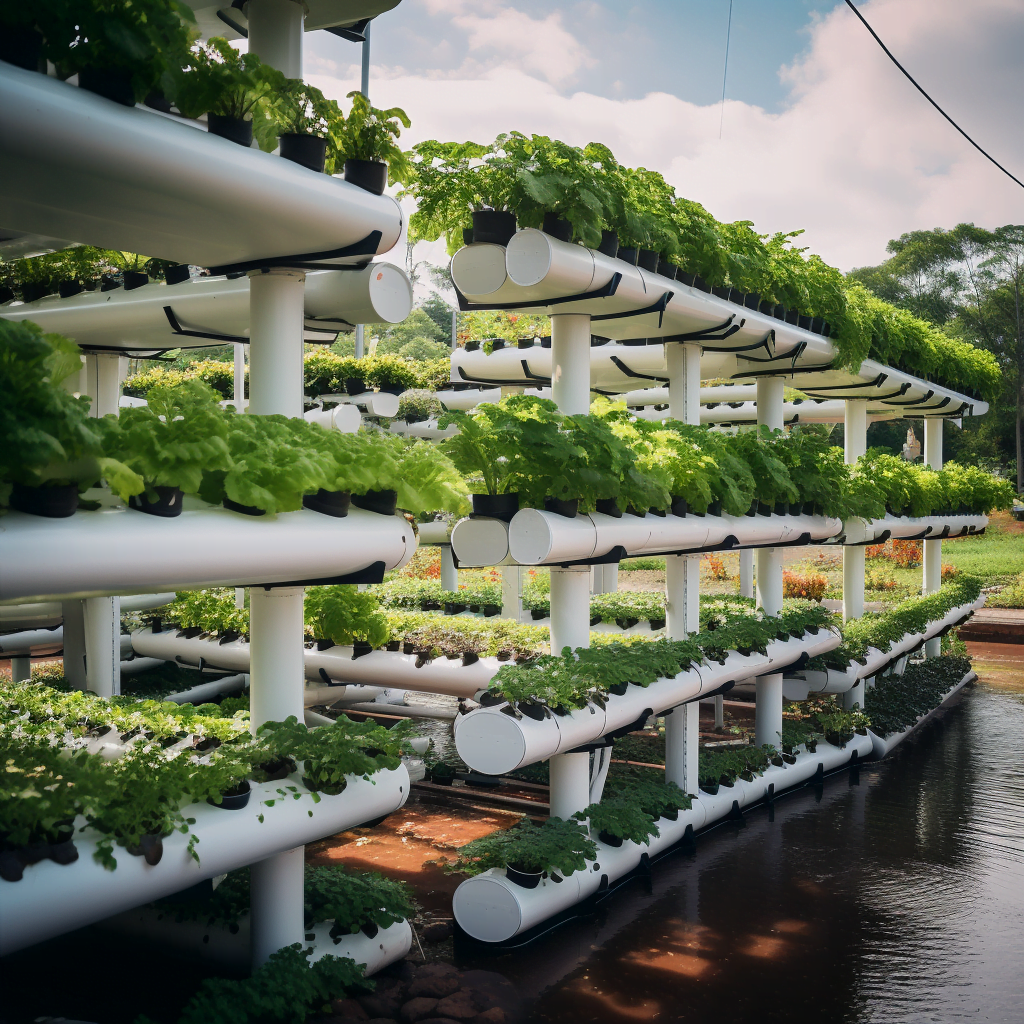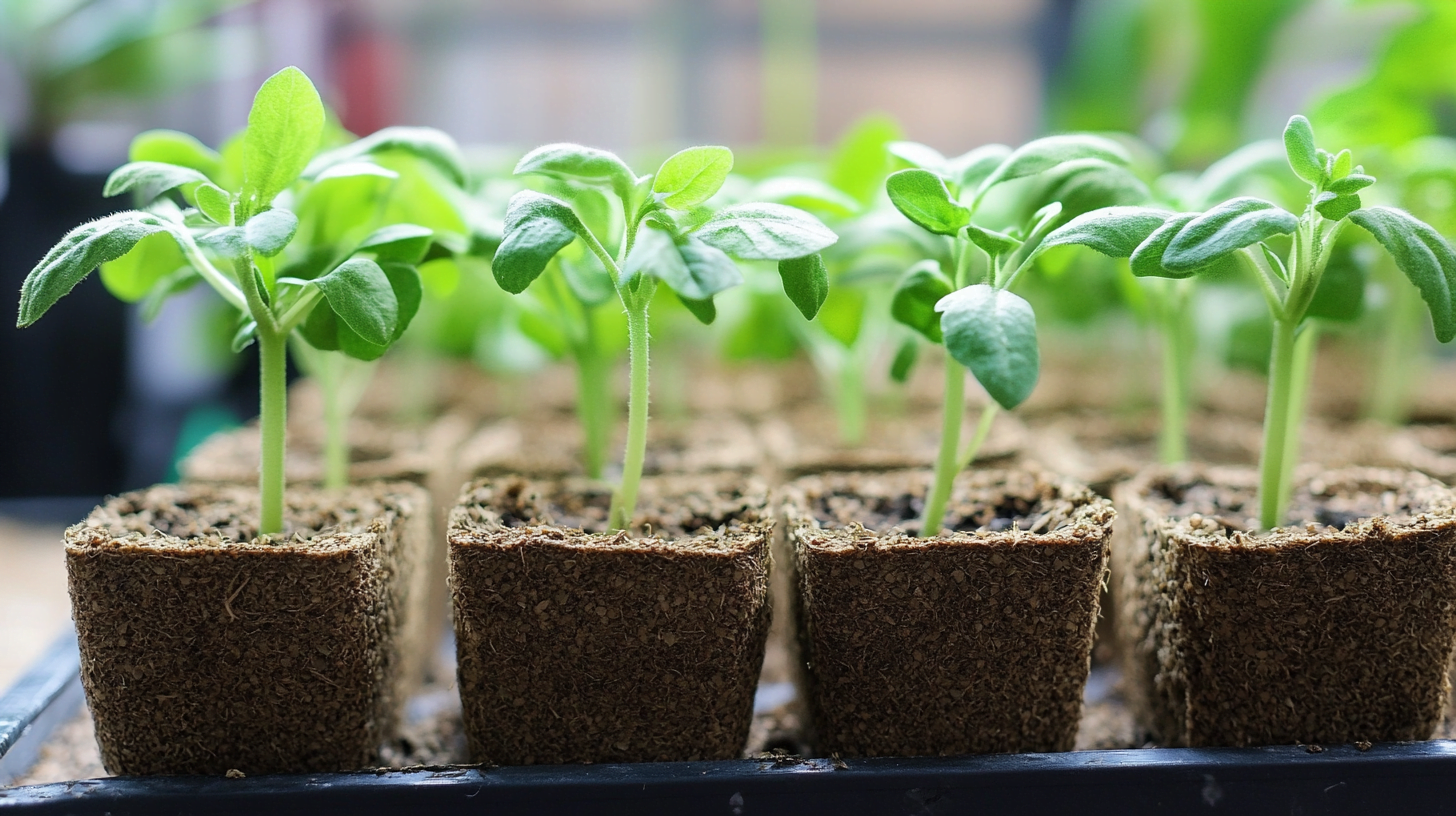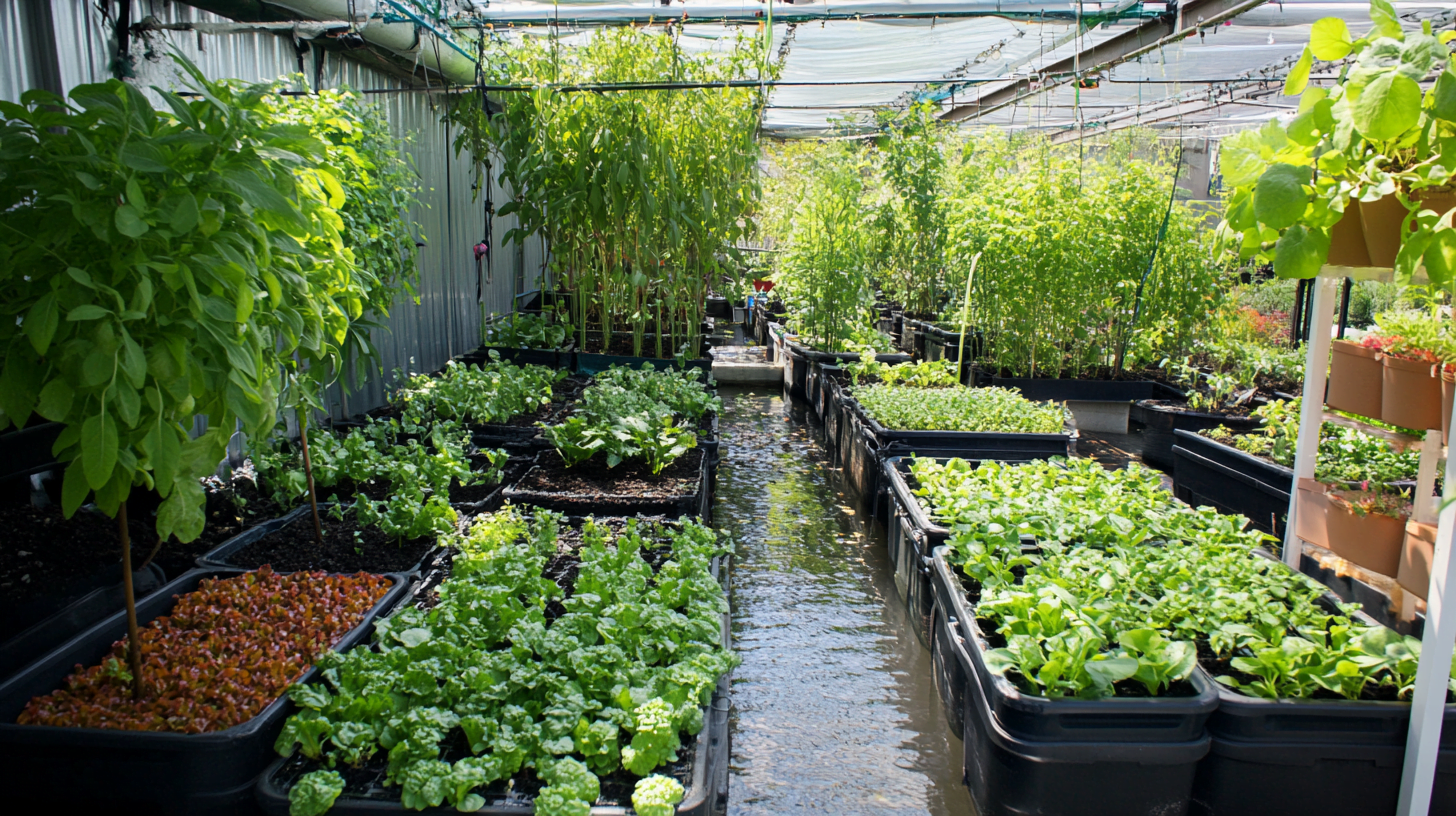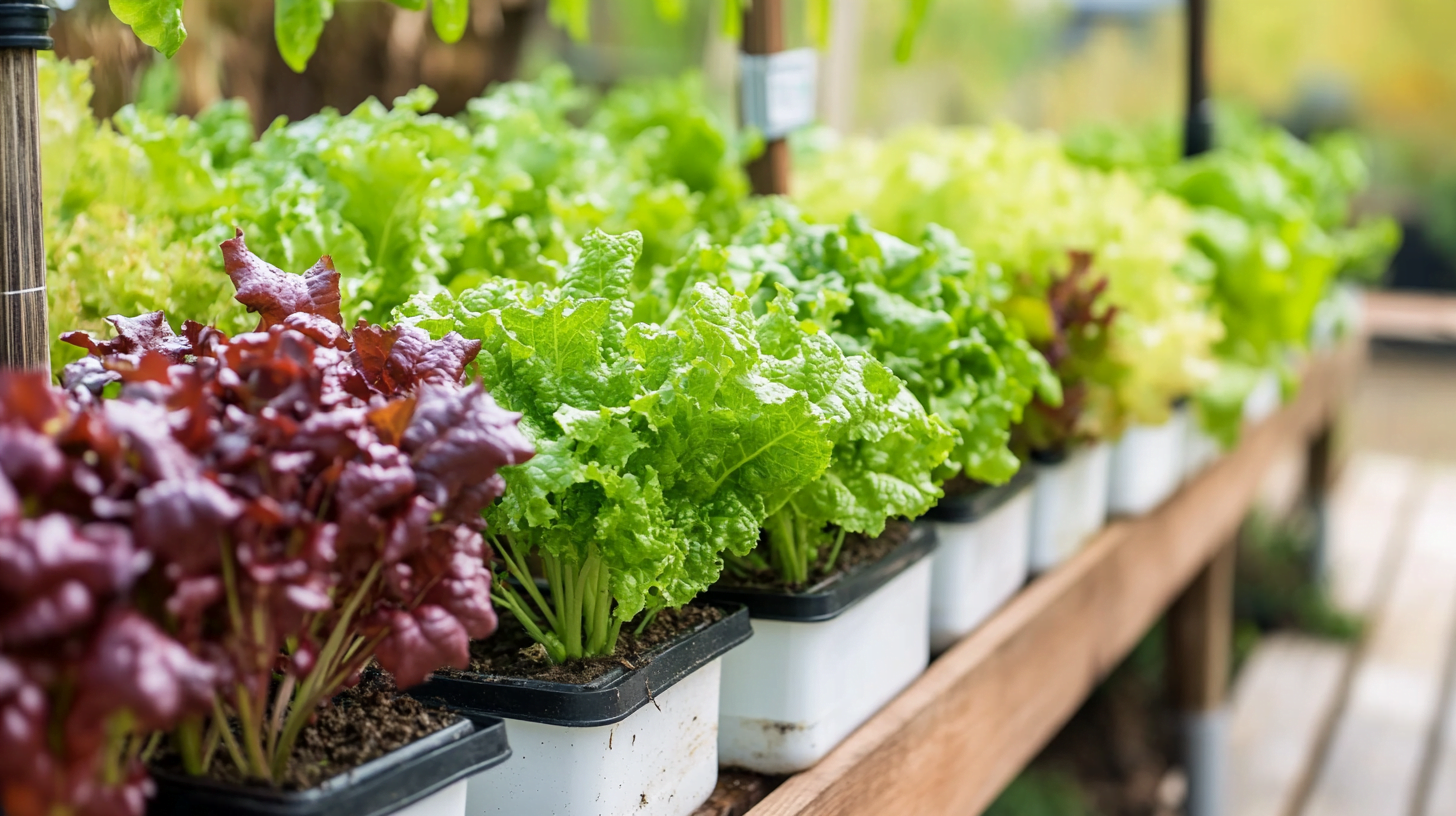Introduction
Hydroponics is the method of growing plants without soil by using mineral nutrient solutions in water. The roots are suspended in the nutrient-rich solution, allowing the plants to absorb the water and nutrients they need to thrive. Hydroponics is popular for its faster growth rate, higher yields, and less water usage compared to traditional gardening.
While hydroponics is commonly done indoors in greenhouses, it is also possible to set up hydroponic systems outdoors. Growing hydroponically outside has many benefits like utilizing more space, using natural sunlight, and experiencing growing in a natural environment. However, there are also challenges like exposure to the elements and pests.
With proper planning and equipment though, hydroponic gardening can be successful outdoors. In this complete guide, we’ll cover everything you need to know, from choosing the right system to caring for your outdoor hydroponic garden. So keep on reading and find out the long answer to Can I Grow Hydroponically Outdoors?
What is Hydroponics?
Hydroponics is the method of growing plants without soil. Instead, the roots are suspended in a nutrient-rich solution that provides everything the plants need. The water and added nutrients like nitrogen, phosphorus, potassium, and microorganisms are delivered directly to the roots.
A Brief History of Hydroponics
The idea of growing plants without soil has been around for centuries. The Hanging Gardens of Babylon and the floating gardens of the Aztecs used hydroponic principles to grow plants in non-soil mediums.
In the 1830s, German researchers experimented with plant nutrition in water culture. The term “hydroponics” was coined in 1937 by Dr. William Gericke at the University of California. His research showed that plants could be grown healthier and faster when fed a liquid fertilizer solution.
Hydroponics began gaining popularity in the 1970s when large-scale hydroponic greenhouses were built. With technological advancements in pumps, aerators, and irrigation equipment, hydroponics became more efficient and cost-effective. Today, it is a leading form of agriculture with both small and large-scale farms utilizing hydroponic techniques.
How Hydroponics Works
In hydroponics, the nutrient solution contains all the nitrogen, phosphorus, potassium, and other nutrients plants normally get from soil. With the roots suspended in the solution, the plants can absorb the vital nutrients directly and vitamin grow exceptionally fast.
Oxygen is also essential for healthy roots and nutrient absorption. Many hydroponic systems use aerators or solution flow techniques to provide oxygen to the roots.
The nutrient levels, pH, and EC (electrical conductivity) of the solution must be monitored and controlled for optimal plant growth. With hydroponics, you have greater control over the plant’s nutritional intake.
Types of Hydroponic Systems
There are several types of hydroponic systems used for both small and large operations:
- Wick System – This is one of the simplest designs. Plants are placed in a porous growing medium like perlite, vermiculite, or coconut coir. A wick extends from the central reservoir and draws the nutrient solution up to the roots by capillary action.
- Deep Water Culture (DWC) – Plants are suspended over a reservoir of oxygenated nutrient solution. Air pumps continuously aerate the solution so the exposed roots have constant access to water, nutrients and oxygen.
- Ebb and Flow (Flood and Drain) – Plants sit in a growth medium and are periodically flooded with the nutrient solution then drained. The cycles of wetting and drying provide oxygen to the roots.
- Drip System – Nutrient solution is dripped or misted onto the roots and growth medium over time. Excess solution drains back to the reservoir.
- Nutrient Film Technique (NFT) – A thin film of nutrient solution runs through sloped channels where the bare roots sit. The moving solution both feeds the roots and provides oxygen.
- Aeroponics – Plant roots are misted with a fine nutrient solution mist in an enclosed chamber. The roots hang suspended in air which increases oxygenation.
- Aquaponics – This is a soilless ecosystem that combines hydroponics with aquaculture (fish farming). The fish waste provides nutrients for the plants, and the plants help filter the water for the fish.
Benefits of Growing Hydroponically Outdoors
While most hydroponic farming is done indoors in greenhouses, there are many advantages to setting up a hydroponic system outside:
More Growing Space
One of the biggest benefits of outdoor hydroponic gardening is the ability to create much larger systems. With indoor spaces, the size is limited by the greenhouse or grow room. But outdoors, you can build expansive hydroponic setups and grow high-density plant varieties like lettuce vertical on walls or trellises. The increased space allows for higher overall yields from the garden.
Utilizing Natural Sunlight
Growing hydroponically outdoors enables you to take advantage of the full spectrum of natural sunlight rather than relying on artificial grow lights. The intensity and quality of natural light cannot be matched by indoor lighting systems. Plants thrive under the natural light they evolved for, leading to faster growth and higher productivity.
Experiencing a Natural Growing Environment
When growing indoors, the plants are confined to an artificial space under lighting and climate control systems. But outdoors, the plants can experience growing in natural fresh air, ambient temperatures, humidity, breezes, and other conditions. This natural environment enriches the growth experience and can enhance the flavor and vitality of the plants.
Lower Energy Costs
Indoor hydroponic operations require high electricity costs to power the grow lights, pumps, timers, and environmental controls. Growing outdoors eliminates the need for artificial lights and reduces the energy costs for controls. The sunshine provides all the light energy needed for free.
More Enjoyable Gardening Experience
For home hydroponic gardeners, growing systems outdoors can provide a more aesthetically pleasing, enjoyable, and rewarding experience. Instead of being confined to a basement or spare room, the hydroponic garden can become a beautiful backyard focal point.
Challenges of Outdoor Hydroponic Gardening
While growing hydroponically outdoors has many advantages, it also comes with some unique challenges:
Exposure to Weather Changes
Outdoor hydroponic systems are vulnerable to the natural weather elements like rain, wind, temperature and humidity fluctuations, frost, and other events. These can damage equipment or disrupt plant growth if the system is not designed accordingly. Greenhouse covers can help protect from some weather changes.
Preventing Pest Infestations
Insects, rodents, birds and other pests are much more likely be attracted to the nutritious hydroponic plants outdoors. Deer, rabbits, and raccoons may also forage in garden areas. Preventative measures must be taken to guard against pest destruction.
Reduced Control Over Conditions
With outdoor hydroponic gardening, you lose some of the control over the nutrient levels, pH, temperatures, and other factors. Indoors these can be closely monitored in a controlled environment, but outside there are more fluctuations.
Dependence on Available Sunlight
The quantity and duration of natural sunlight will impact the growth rate and productivity of the plants. Based on geographic location and local weather, the outdoor hydroponic system may not receive optimal sunlight year-round. Supplemental lighting could be needed at times.
Risk of Toxic Contaminants
Outdoor hydroponic solution reservoirs run a higher risk of becoming contaminated from toxins in rainwater or other environmental sources. This can lead to plant damage or health issues if consumed.
Potential Structural Damage
Any supporting structures, frames, and equipment will need to be reinforced to withstand outdoor elements including heavy winds, snow loads, and storms. Anchoring, weatherproofing, and protective covers are necessary.
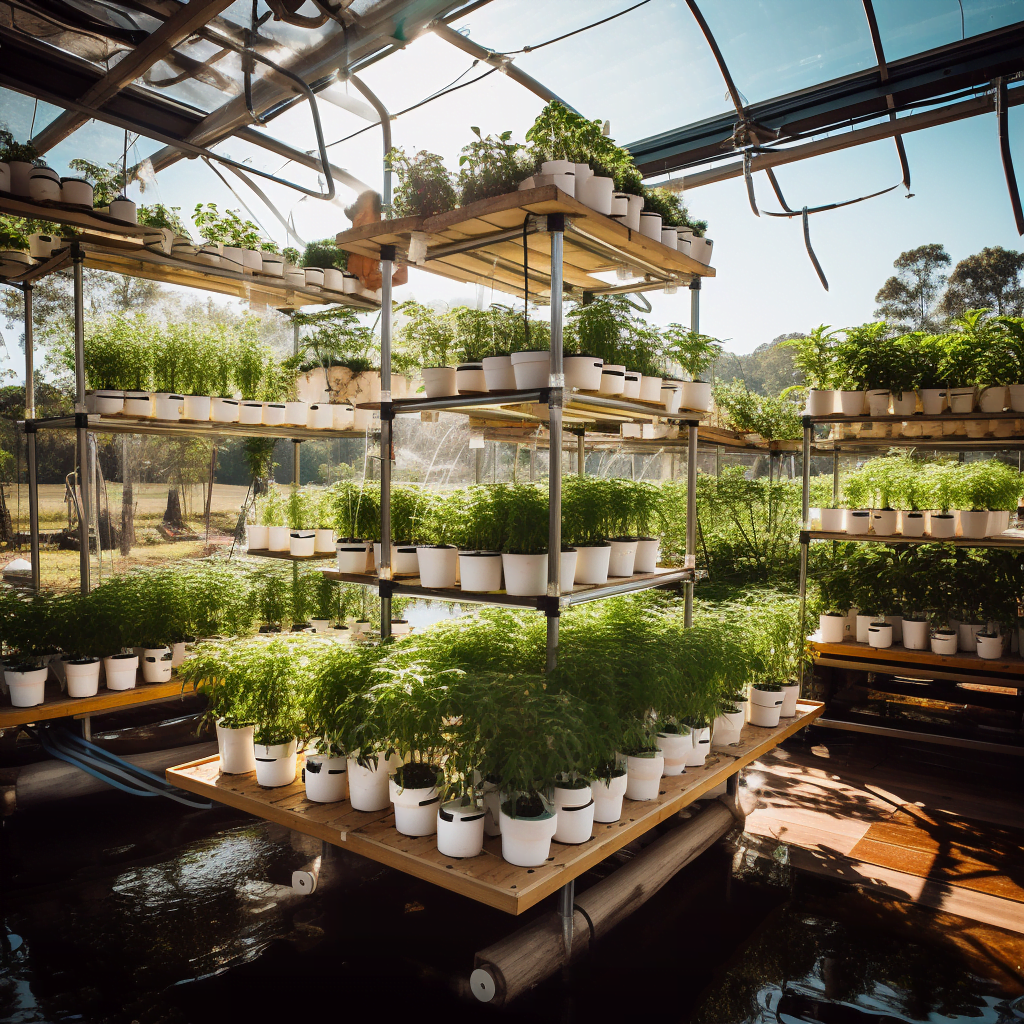
Choosing the Right Outdoor Hydroponic System
To overcome the challenges of outdoor growing, the hydroponic system needs to be durable, low maintenance, and resilient to the natural elements. Here are some good options:
Wick System
A wick system is one of the simplest passive hydroponic designs suitable for outdoors. The wicking action requires no electricity and has few components vulnerable to weather. As long as the reservoir is refilled, the wick continually draws up nutrient solution.
However, wick systems offer less control over oxygenation, pH, and nutrients compared to active systems. The exposed reservoir also risks algae growth and contamination.
Deep Water Culture
Deep water culture systems work well outdoors since the large reservoir helps insulate roots from air temperature changes. The constant aeration of the solution also provides ample oxygen to the exposed roots.
Good covers, insulation, and circulation heaters may be needed in cold climates to maintain root zone temperatures. Aeration pumps should be weatherproofed and connected to a backup power source.
Ebb and Flow / Flood and Drain
Ebb and flow systems cycle between flooding the grow medium and then draining. The wet/dry fluctuation helps control root temperature and discourage pests and algae.
Outdoor ebb and flow systems need waterproof timers and plumbing designed to handle weather conditions. Backup pumps can ensure flooding occurs if power goes out. The reservoirs should be opaque and tightly sealed.
Nutrient Film Technique
NFT systems work well outside since the thin film of solution exposes roots to oxygen while still providing nutrients. The sloped channels allow continuous flow.
For outdoor NFT systems, the channels must have waterproof covers to prevent excessive evaporation and contamination. Use UV-resistant tubing that won’t degrade in sunlight. Monitor flow rates closely and install backup pumps/power.
Aeroponics
Aeroponic systems are highly suitable for outdoor conditions. Since plant roots are suspended in air, they are protected from environmental fluctuations. The aeroponic misters provide nutrients precisely without wasted solution.
The misting components must resist weather corrosion and have backup power sources. Enclose the root chambers fully while providing ventilation. Ensure adequate structural support for any wind loads.
Comparison of Systems
When choosing the best outdoor hydroponic system, consider these factors:
- Climate conditions – temperature, sunlight, rain patterns
- Desired level of control over nutrients and pH
- Available power sources and need for electricity
- Prevention of pests and diseases
- Budget and complexity preferences
In hot, sunny climates an active system like NFT may grow plants faster. In cold or dry regions, DWC offers greater insulation and reserves. Passive wick systems require less equipment to maintain.
DIY or Purchased Kits
For home hydroponic gardens, purchased all-in-one kits tailored for outdoors provide easy setup with durable components. These include the plumbing, reservoirs, timers, and parts needed.
More advanced hydroponic growers may choose to build a customized system from scratch using individual components like tubing, pots, growing trays, and controls. This allows more flexibility but requires hydroponics experience.
Either way, be sure to use outdoor-rated, weather-resistant materials that won’t degrade from sun and moisture exposure. Reinforce structures to handle winds.
Setting Up Your Outdoor Hydroponic System
Once you select an outdoor hydroponic system, proper setup is crucial. Here are the key steps for installation and operation:
Select an Ideal Outdoor Site
The location you place your outdoor hydroponics setup will impact its performance. Choose a spot that receives at least 6 hours of direct sunlight daily. Sunny south-facing sites are ideal for maximum light exposure.
Ensure the ground is flat and stable enough to support reservoirs, plumbing and structural supports. Have accessible power and water sources to connect components. Check that the area drains well to prevent puddling after rains.
Build Strong Structural Supports
The frames and structures supporting the hydroponic system need to be reinforced to withstand outdoor elements. Use weather-resistant building materials like treated lumber, PVC plastic, or steel.
Anchor the support structures securely into the ground to resist wind forces. Build sloped covers to shed rain and prevent standing water. Use concrete footings below ground for extra stability.
Install Waterproof Plumbing
Use only UV-resistant tubing rated for outdoor use when assembling the plumbing components like pipes, valves, distribution lines and drainage. Secure all connections tightly.
Raised plumbing off the ground prevents puddling below. Insulate any water lines that will carry chilled nutrient solutions to prevent freezing. Have multiple drainage lines so excess can drain quickly after storms.
Set Up Water Pumps and Timers
Carefully size pumps to provide optimal water flow and pressure to your specific system. Use heavy-duty exterior pumps with weatherproof casings. Obtain pumps with backup power connections.
Install timers to control the lighting, water flow, flooding cycles and other automated functions. Choose watertight timers with battery or solar power backups in case of outages.
Create Nutrient Reservoirs
The nutrient solution reservoirs should be made of opaque, UV-resistant plastic or lined with reflective insulation to prevent light exposure and algae growth. Use black or blue containers that block light.
Keep reservoir volumes substantial to help maintain stable temperature and pH. Install tank heaters if needed to regulate cold ambient temperatures in the reservoir. Use tight-sealing lids.
Test and Adjust Water Chemistry
Before introducing plants, test and adjust the water chemistry in the hydroponic system. Measure the pH, EC, and individual nutrient levels and alter according to the requirements of your plant varieties.
Maintain optimal pH and nutrient concentrations throughout the grow season by frequently testing the reservoir solution. Test rain or other irrigation water sources first for contaminants.
Start Planting!
Once the structural, plumbing, and equipment components are set up and tested, it’s time to start planting and caring for your outdoor hydroponic garden. Monitor your system daily and make adjustments as needed to ensure your plants thrive.
Caring for an Outdoor Hydroponic Garden
Successfully operating an outdoor hydroponic system involves diligent maintenance and care:
Monitor and Control pH and Nutrients
Test and adjust the pH and nutrient levels in your reservoirs on a regular basis, at least weekly if not daily for some systems. Careful monitoring ensures plants get the proper nutrition and the water stays balanced.
Watch for pH or nutrient fluctuations after adding water or fertilizers. Maintain detailed logs of your chemistry readings each day. Invest in a pH meter and EC meter for frequent testing.
Prevent and Manage Pests
Take proactive measures to guard your outdoor hydroponic garden from pests like insects, rodents, deer and birds. Use garden netting and fencing to block access. Traps, natural repellents, and natural pesticides can remove pests if an infestation begins.
Inspect plants thoroughly each day for any signs of pest destruction, eggs, or larvae. Remove any infected areas immediately to prevent spreading. Keep the surrounding area clear of debris.
Clean and Replace Equipment
Regularly clean and replace hydroponic system components to prevent buildup of debris, mineral deposits, and bio-growths that can clog or contaminate the system.
Clean out drainage lines, valves, emitters or sprayers, tubing, and pumps. Replace aging or defective plumbing and parts before problems occur. Remove and scrub away any algae.
Maintain Stable Nutrient Reservoirs
Carefully monitor the levels of the hydroponic nutrient solutions in reservoirs and refill as needed to maintain the desired volumes. Top off any evaporation or consumption losses.
Stir or circulate the reservoirs daily to prevent separation or settling of nutrients. Replace old reservoir solution on a regular schedule to replenish nutrients – usually every 1-2 weeks.
Regulate Environmental Conditions
While you can’t control the weather, use shading, ventilation, misting and other techniques to moderate harsh outdoor conditions for plants.
Install shade cloths to reduce intense sunlight on hot days. Use plastic covers or greenhouse films to boost humidity and temperatures as needed. Ensure adequate airflow to prevent overheating.
Best Plants for Outdoor Hydroponic Growing
Many edible and ornamental varieties grow well outdoors hydroponically. Some top plant choices include:
Lettuce and Leafy Greens
Lettuce, kale, spinach, arugula, and other greens are ideal for outdoor hydroponics. They grow quickly in cooler weather with ample sunlight and tolerate some frost. Grow leafy greens with NFT channels or raft systems.
Tomatoes and Peppers
Tomato and pepper plants flourish outdoors during warmer months. Train vines vertically using strings or cages to increase yields. Cherry tomatoes produce abundantly hydroponically. Maintain reservoir temperatures above 60 F.
Herbs
Pungent herbs like basil, oregano, thyme, parsley, cilantro, and chives are extremely productive when grown hydroponically outside. The flavorful oils become more concentrated under natural light.
Cucumbers, Melons, and Squash
Vining crops like cucumbers, watermelon, cantaloupe, zucchini, and other squash take advantage of outdoor space and light intensity to grow large. Use trellises for vertical growth and support.
Strawberries and Berries
Ever-bearing strawberries, blueberries, and raspberries can be grown successfully outdoors with hydroponics. Focus on good drainage and air circulation to prevent mold and rot with berries.
Other Fruiting Crops
Many vining fruits like tomatoes and peas also thrive outdoors with proper hydroponic management. Other options include beans, eggplants, and peas. Provide strong trellises for support once these become heavy with fruit.
Flowering Plants
Beautiful flowering species like lilies, geraniums, petunias, marigolds, sunflowers, and orchids grow vigorously outside. Monitor pH closely for optimal blossoms. Focus on well-drained media to prevent root rot.
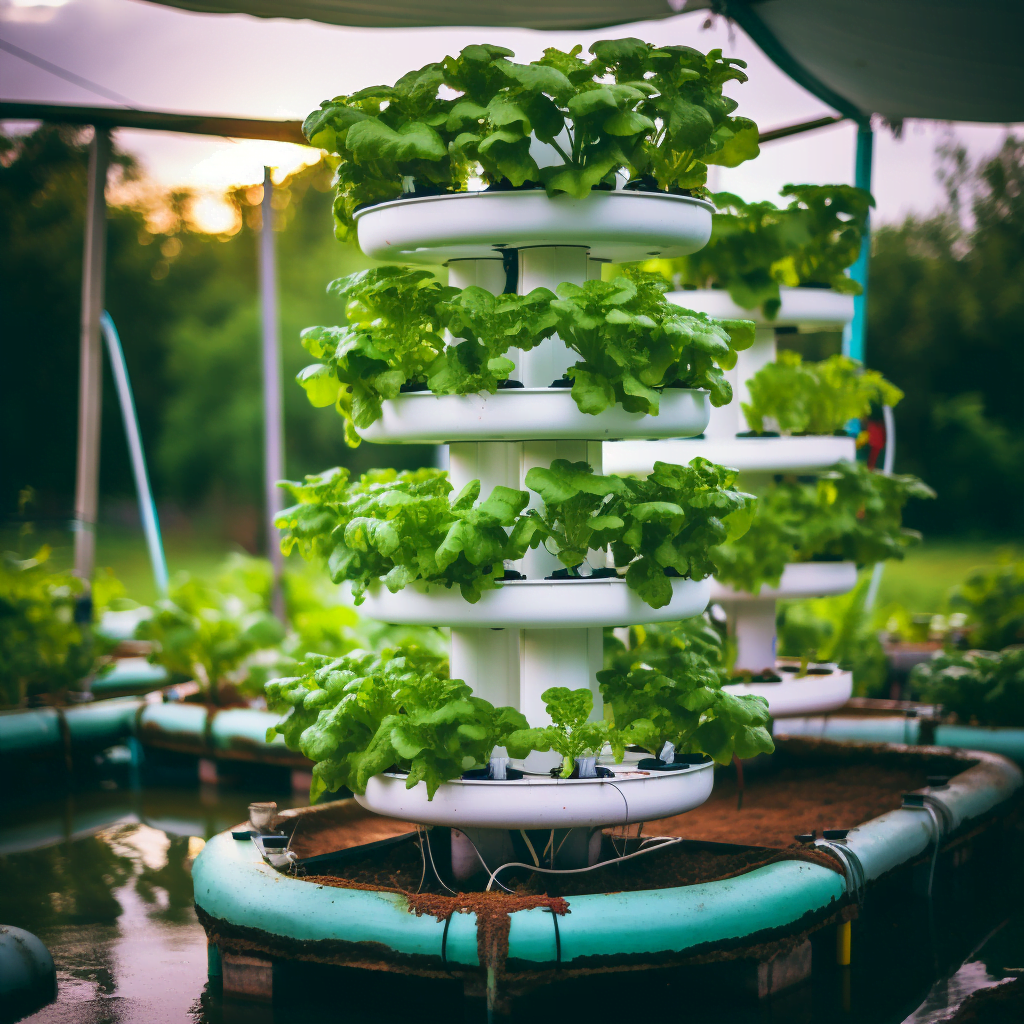
Tips for Successful Outdoor Hydroponic Gardens
To maximize the productivity of your outdoor hydroponic systems, follow these key tips:
- Select fast-growing plant varieties adapted to your particular climate.
- Check system chemistry and operation daily to catch any issues immediately.
- Use greenhouse films, cold frames, or shade cloths to extend the growing season.
- Have backup power supplies or solar panels to maintain operation during outages.
- Reinforce all structures to handle severe weather events like high winds.
- Choose durable outdoor-rated components resistant to the elements.
- Monitor and control pests without delay before they spread.
- Test rainwater runoff before using it to top off reservoirs.
- Keep detailed records of plant growth, pests, chemistry fluctuations, and harvests.
- Prune and train plants for optimal shape and growth habit.
- Start seedlings or clones indoors before transplanting outdoors.
- Group plants with similar light, water, and nutrition needs together.
- Add beneficial microbes to reservoirs to protect root health.
- Check plumbing frequently for leaks or clogs and repair immediately.
- Insulate reservoirs and lines to maintain stable root zone temperatures.
- Maximize vertical growing space with walls, trellises, stacking, etc.
Troubleshooting Common Outdoor Hydroponic Issues
Even with the best system design and maintenance, problems can still occasionally occur. Here are some common outdoor hydroponic growing issues and how to troubleshoot them:
Slow growth or low yields
- Check pH and nutrient levels in reservoir
- Test EC to ensure proper fertilizer strength
- Monitor root health for rot or discoloration
- Assess ambient temperatures and adjust as needed
- Rule out pest, disease, or deficiency issues
Root rot
- Improve drainage and oxygenation of system
- Reduce humidity levels with fans if too high
- Lower reservoir temperatures if too warm
- Use hydrogen peroxide drenches to kill root rot
Nutrient deficiencies
- Identify deficiency based on plant appearance
- Adjust individual nutrient concentrations accordingly
- Perform foliar feeding to supplement nutrients
Algae growth
- Use opaque reservoirs blocking sunlight
- Cover channels, tubes and water surfaces
- Control ambient humidity and temperatures
- Manually remove algae and clean system
Clogged plumbing
- Flush debris from lines with high pressure
- Switch to larger diameter tubing if undersized
- Check and clean all filters, emitters and hardware
Pest infestations
- Identify type of pest and life stages
- Remove infected plant parts immediately
- Apply appropriate organic pest control
- Install row covers or netting for prevention
Equipment malfunctions
- Troubleshoot issues based on symptoms
- Check for leaks, blockages, breaks, electrical faults
- Repair or replace damaged components
- Have spare parts available for critical items
Conclusion
Growing hydroponically outdoors is certainly achievable with the right system design, maintenance, and horticultural practices. Take advantage of increased space, sunlight, and the natural environment while overcoming challenges like weather, pests and reduced control of conditions.
Select outdoor-specific hydroponic equipment that can withstand the elements. Use structures engineered for wind, rain, and weight loads. Adapt components like reservoirs and plumbing to prevent weather-related problems. Monitor system chemistry and operation vigilantly.
Choose suitable plant varieties for your climate that grow vigorously outdoors hydroponically. With research, planning, and preparation, an outdoor hydroponic garden can produce bountiful harvests of vibrant, healthy plants. Use this complete guide to implement the best practices and soon you’ll be growing hydroponically outside successfully!
